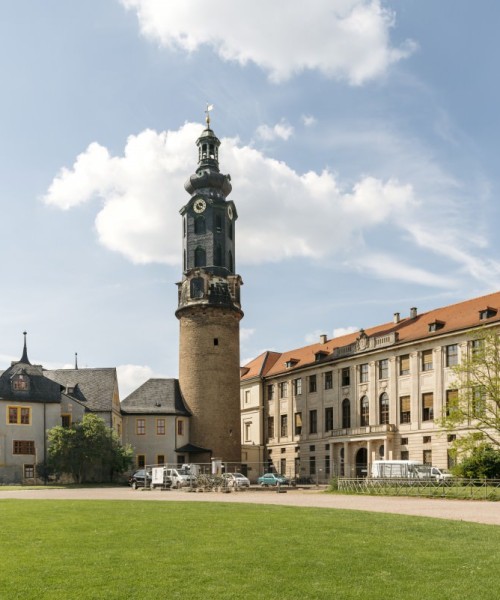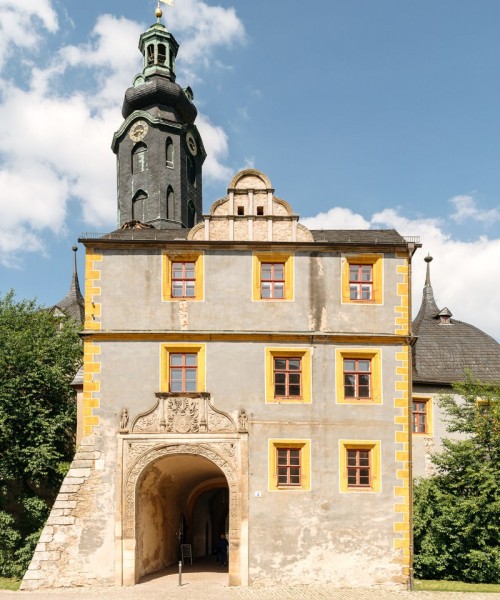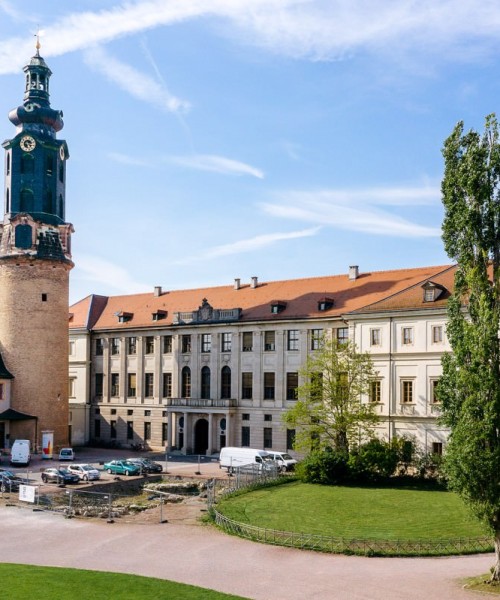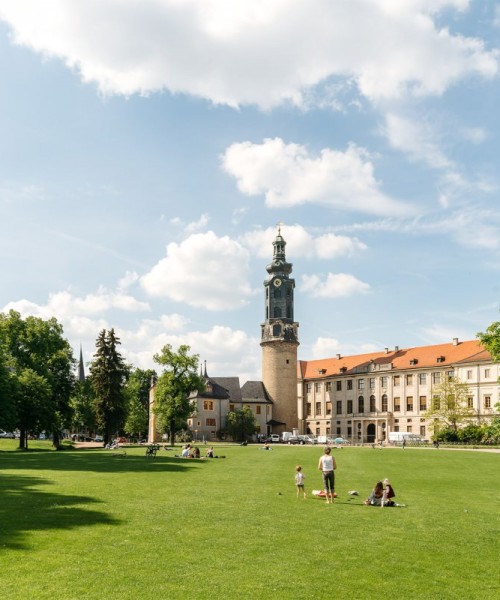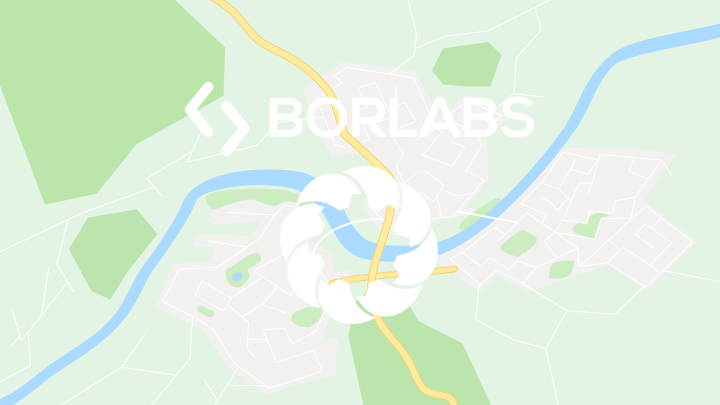The Grand Ducal Palace and Park on the Ilm
Residence of the Dukes of Saxe-Weimar and Eisenach
Right in the historic center of Weimar lies a building that reflects the cultural development of Germany like no other: the Grand Ducal Palace. Its origins date back to the Middle Ages, when a moated castle laid the foundation stone here. Over the centuries, it was extended, rebuilt, reconstructed after fires - and finally formed into a magnificent residence.
Today's palace presents itself as an impressive neoclassical complex. The reconstruction from 1789 onwards under the direction of Johann Wolfgang von Goethe was particularly influential. Together with leading architects of his time, he designed a house that was not only the seat of the dukes, but also a place of intellectual radiance: with an elegant banqueting hall, a representative staircase and stylish interior design.
The Poets' Rooms are a cultural highlight. Grand Duchess Maria Pavlovna furnished them in the 19th century as memorial rooms for the great Weimar authors: Wieland, Herder, Schiller and Goethe - names that are now inextricably linked with the city.
The palace museum houses valuable works of art from the Middle Ages to modern times. The famous Cranach Gallery displays masterpieces of old German painting. Works by Caspar David Friedrich, Auguste Rodin, Max Beckmann and other artists make the tour through the historic rooms an impressive experience. The collection is complemented by ornate furniture, porcelain and handicrafts from the Goethe era.
Park on the Ilm - a masterpiece of garden art
Directly adjacent to the Grand Ducal Palace is the 48-hectare Park on the Ilm. This green oasis, which is part of the UNESCO World Heritage Site “Classical Weimar”, was designed in several stages in the 18th and 19th centuries and reflects the artistic and philosophical ideals of the time. The park impresses with its winding paths, romantic lines of sight and ornate park architecture, including the Roman House - a classicist gem that once served Duke Carl August as a summer residence.
A walk through the park is like a journey into the past: Goethe's garden house, the Borkenhäuschen and the historical monuments bear witness to the Weimar court's deep connection with art, nature and literature. The harmonious combination of architecture and landscape makes the Park on the Ilm the perfect place for culture enthusiasts, nature lovers and anyone looking for a break from everyday life.
A delight for all the senses
Whether it's an art history tour of the palace, a leisurely stroll along the Ilm or a literary search for traces of Goethe - the Grand Ducal Palace and the Park on the Ilm offer a variety of experiences for every taste. Immerse yourself in a world where history comes to life and be inspired by the unique atmosphere of this cultural jewel.
Amenities and Facilities

Guided tours

Parking
Hours of Operation and Ticket Prices
Castle Museum
The palace museum is closed for renovation and reconstruction work. Guided tours of the Poet's Rooms are possible, see the KSW calendar of events.
Ensemble Bastille
„Bach-Erlebnisraum Bastille“
all year-round
Tuesday to Sunday
10:00 a.m. – 5:00 p.m
Contact
The Grand Ducal Palace and Park on the Ilm
Klassik Stiftung Weimar
Burgplatz 4
99423 Weimar
Phone: +49 3643 / 545 400
Email
Homepage Stadtschloss Weimar
Homepage Park an der Ilm
Tourist-Information
Mark 10
99423 Weimar
Ensemble Bastille
Stiftung Thüringer Schlösser und Gärten
Schloss Heidecksburg
Schloßbezirk 1
07407 Rudolstadt
Phone: +49 3672 / 447 0

